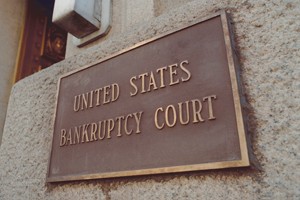Why
not bankruptcy?
Consumer bankruptcy filings have steadily declined over the last 52
months. There has not been an increase
in filings in that time and most year-over –year drops have been at least 10%
over the past 4 years or so. In Vermont,
total case filings, which are primarily consumer cases, have gone from 1,626 in
2010 to only approximately 600 cases so far this year. Why such a significant drop?
The precipitous drop in filings has puzzled practitioners and economists
alike. Sure, the economy has been
steadily improving, but the filing numbers are not tracking as consistently
with the economic factors such as unemployment as they had in the past. Unemployment can actually temporarily reduce
filing numbers because the unemployed often cannot afford to file for relief
and have more pressing needs to attend to. Despite some uptick, a predominant theory
remains that filings are down because people simply cannot afford to file for
relief, especially those in the income segments that have historically been
more likely to file. The improving economy is not necessarily reaching those
folks, not quite yet.
Another theory relates to one of the primary reasons that consumers seek
bankruptcy relief: credit card debt.
When the bankruptcy laws changed significantly in 2005, a pervasive myth
began taking hold--that credit card debt is no longer dischargeable. No one quite knows the origin of this myth,
although it could be closely related to the near $100 million that the credit
card industry spent over the years to lobby for the bankruptcy reform. The rumor is simply unfounded and despite all
of the significant changes to the bankruptcy laws in 2005, there is no filing
restriction specifically with respect to credit card debt. One thing is certain, however, credit card
debt among consumers is down. Statistics
show that both lenders and borrowers alike have caused significant credit card
debt decline since the 2008 recession.
Lenders have tightened their requirements and borrowers have curbed
their usage since 2008, reducing, for now, one major reason to file.
Consumer bankruptcy filings also have some direct relation to foreclosure
filing cycles. The peak year of
bankruptcy filings post-recession nationally was around 2009-2010, reported to
be directly in relation to a wave of foreclosure filings. With the potential for HAMP and other
modifications and stricter foreclosure standards state-by-state, the
foreclosure filings had either decreased since 2010 or had been delayed to the
extent that bankruptcy filings became less urgent. While foreclosure filings are decreasing
some, it is troubling that mortgage default rates, while declining very slowly,
are nowhere near the pre-2008 mortgage default rates. Another troubling statistic indicates that
consumers are struggling for nearly 2 years prior to filing compared to much
shorter periods prior to the bankruptcy reform.
The mortgage default rates and increased period of struggle clearly show
that the decline in consumer filings is neither permanent nor an indication
that the economy has completely turned around.
While credit card debt has declined, student loan debt has not. In fact, student loan debt among consumers
has grown over 50% in the last ten years or so.
Unfortunately, student loan debt is essentially non-dischargeable in
bankruptcy. Despite that the debt cannot
be eliminated, student loan debt also cannot be treated favorably over other
unsecured debt in a Chapter 13 bankruptcy plan.
The inability to discharge or restructure the most significantly
increased sector of unsecured debt must be another reason that consumer filings
are down. While bankruptcy is intended
to provide relief from crippling debt, student loan debt is immune from the
magic wand relief we’ve described previously.
As the debt only increases, it may spark the next big area of bankruptcy
reform. Stay tuned for a Bankrupt-C
Y-blawg devoted exclusively to student loan issues.
Bankruptcy filings have become a bit more complicated since the 2005
bankruptcy reform, which is touted for the increased delay for consumers to
seek relief. Just as ever, a filing can still provide a significant amount of
relief for a person who is struggling financially. Timing can be crucial, and we certainly find
that the cost and effort required to complete a successful bankruptcy case may
not be attainable or ideal for someone who is unemployed or in the midst of other
crises.
A
consultation, however, is beneficial to nearly everyone who is struggling
financially. The most important thing is
to become informed and know your options.
We understand the effects of crippling debt and find that most people do
wait far too long before they seek help.
The most rewarding part of my practice is to see the physical change in
clients as options are presented to them that show some light at the end of the
tunnel. Over the course of a consultation,
I watch the perceptible weight begin to lift and see the clients breathe more
deeply. They may even smile.

No comments:
Post a Comment